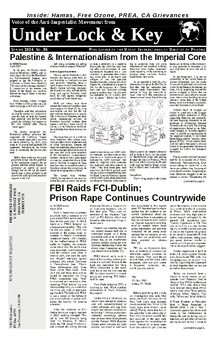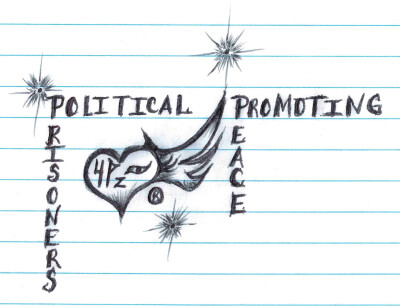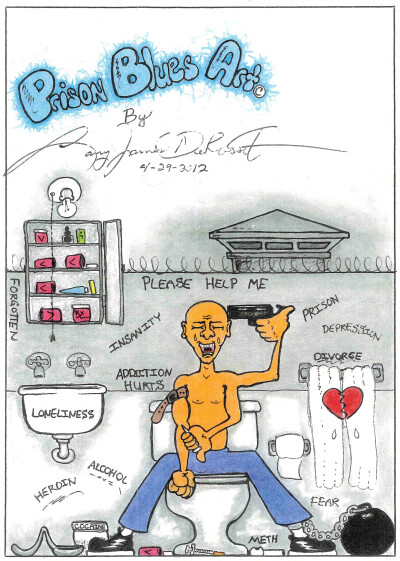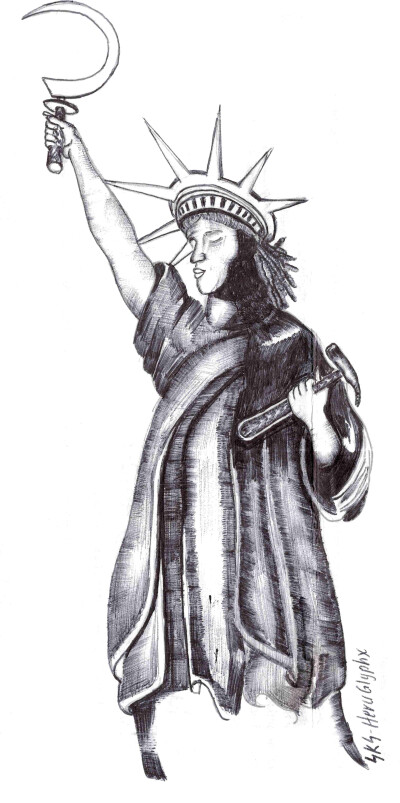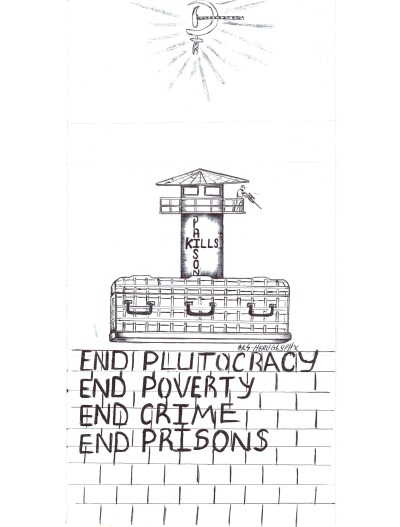
ULK 83 Correction: Murders Weren't About Drugs
Dear MIM-ULK Editor,
Your Fall 2023 edition, at page 11, published the article “Prisoners Punished for Drug Problems in Texas”. The article began:
“On 6 September 2023 the Texas Department of Criminal Justice (TDCJ) prison system mandated a statewide lockdown due to the number of deaths related to drugs: a total of 16.”
This “related to drugs” statement IS A LIE fabricated by prison administrators to cover up the TRUE basis for the 16 murders, and cast the blame and causes for the killings on solely the prisoners, with no accountability on the government. Drugs had little to nothing to do with the murders!
I am on the McConnell Unit – 5 of those 16 murders occurred here; the highest murder rate of any TDCJ-CID facility. There were, also, 3 sodomy sexual assaults. 5 murders and 3 rapes in one 12 month period. NONE of them drug related per se.
From reading the article and its various contributors’ focus; I am making an informed deduction that the fellow prisoners who contributed based their deductions solely on the TDCJ-CID “Public Information Office” press release propaganda alone, with no real knowledge of the truth. I dug deeper and actually investigated.
The FACTUAL causes of the murders was total absence of any meaningful Classification and Housing Policy/Practice to separate categories of personality types; coupled with the administration’s practice of imposing 24/7 lockdowns due to shortage of personnel; and, feeding high-carb, starchy meals that meet caloric amounts but are devoid of bio-necessary nutrients.
Of the 5 murders and 3 rapes over 12 months here at McConnell Unit, one murder was committed by a prisoner high on K-2 and one of the rapists was drunk on “hooch”. The other 4 murders were NON-drug-related – the killers and victims were incompatible personalities placed in an 8’x12’ closet-sized cell and, at the time of the murders, having to spend 24 hours a day in the cell together. Nerves got frayed, personalities clashed, someone died. All three rapes occurred under similar circumstances: cellmates who were under a prolonged in-cell period due to “Staff Shortage”; one a dominant predatory personality, the other a passive victim – the predator gave in to his nature, the victim got sodomized.
In EVERY murder and rape, it could have been avoided had TDCJ-CID enforced a legitimate and meaningful classification, Housing Policy and Practice that separated prisoners into housing with compatible personalities and dispositions. However, classification is almost universally based on:
- age range;
- physical size; and,
- disciplinary history.
While TDCJ-CID policy states various other factors for the classification as well, actual practice uses only the above 3. Cell assignments usually keep the occupants within a similar age and physical size, but the overall cellblocks will contain ranges in age from 18-98 and people ranging from 5’2”, 100 lb to 6’6”, 350 lb. We’ll get a 19-20 year old first offender with 10-12 disciplinary cases in prison for a few theft cases put in a cell with a hard-core Gangsta on his fifth trip to prison for domestic violence/armed assault.
Since state law does NOT allow for any kind of public oversight NOR citizens’ investigations of conditions and administrative practices in the prison facilities, TDCJ-CID can fabricate whatever tale it wants to explain the murders and rapes – hence, put the blame on drugs, gangs, etc. and deny itself any blame.
I realize ULK Editors MUST rely on prisoners’ reports to even know what circumstances are behind the walls. However, it’s prudent that you fact check what the prisoners say, because the vast majority of Texas prisoners actually take “Official Reports” as truth and never even question what they hear on the news!
CLUE: Anytime an Official Report points its finger solely at prisoners to assign blame, and/or gives excuses that open a door to imposing harsher or more restrictive “security” measures – the odds are the Official Report contains lies and is little more than “Perception Management” propaganda to deceive the public.
Courts will not pry into prison operations; they always defer to the “professional knowledge of prison authorities” and accept whatever fabricated “fact” the prison administration offers. When any public organization tries to monitor inside prison conditions, they are blocked. And, the prison administration always has “Brown Nose” prisoners willing to sing whatever song officials want in exchange for privileges.
Prisons are for the most part “black holes” where the light of truth is concerned – truth is sucked in and hidden while only the darkness of lies is visible.
TDCJ-CID has about as much transparency as the CIA – and, until Congress adopts a Law, or the people put in the state Constitution something that imposes citizen oversight (by independent organizations), TDCJ-CID will remain a near-opaque agency.
Thank you for the attention you’ve given to this reality of life in Texas prisons.
MIM(Prisons) responds: We thank this comrade for the additional information on the situation on the ground. We explain our perspective and our reliance on on-the-ground correspondents in every issue of ULK in a box titled ‘On “Objective” Reporting.’
The main point of the article being responded to was that the TDCJ was enforcing a statewide lockdown for a problem that they caused. We know there is massive drug addiction plaguing the imprisoned population in Texas and many other states right now. So in these regards we had the facts straight, and made it clear that it was the staff to blame.
That said we appreciate the additional information this comrade provides on the causes of the deaths and violence. We would not say that celling certain personalities together are at the heart of the violence. And we certainly wouldn’t blame predatory behavior on an individual’s “nature.” There are plenty of contexts in which different people can live together without killing each other. It is the particular oppressive and stressful conditions of U.$. prisons that lead to these tragedies and lost lives. As this comrade mentions, solitary confinement and poor food are serious stressors on the body, especially the brain. It is our experience that the drug economy is a big contributor to conflicts as well. This is not blaming the prisoners, this is blaming the state for promoting the current drug epidemic as a means to divide and pacify the oppressed.
The principal contradiction that defines the prison system is that between the captive and the captor. It is in the interests of the captor, who is the minority, to distract and divide the captives. This must come first, before things like ignoring celling protocols can become operative in a way that leads to deaths. A united prisoner population would not be manipulated by celling strategies.
That said, we agree that policies regarding who is celled with who can reduce these conflicts in our current situation. More importantly, we agree that some kind of outside oversight and pressure is necessary to change the ways of those who would be enforcing such policies. It is only through building true independent institutions that we can begin to apply such independent pressure in a way that serves the people by preventing these oppressive tactics.
Related Articles:This article referenced in:
